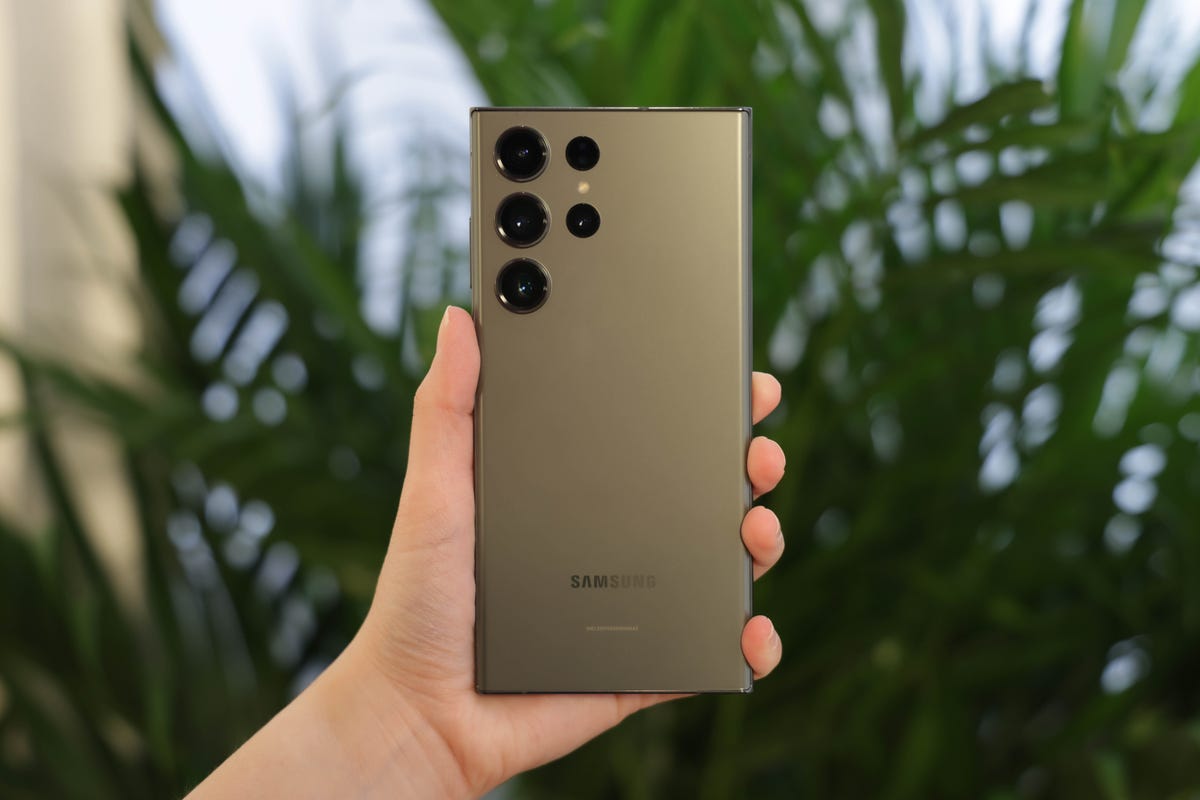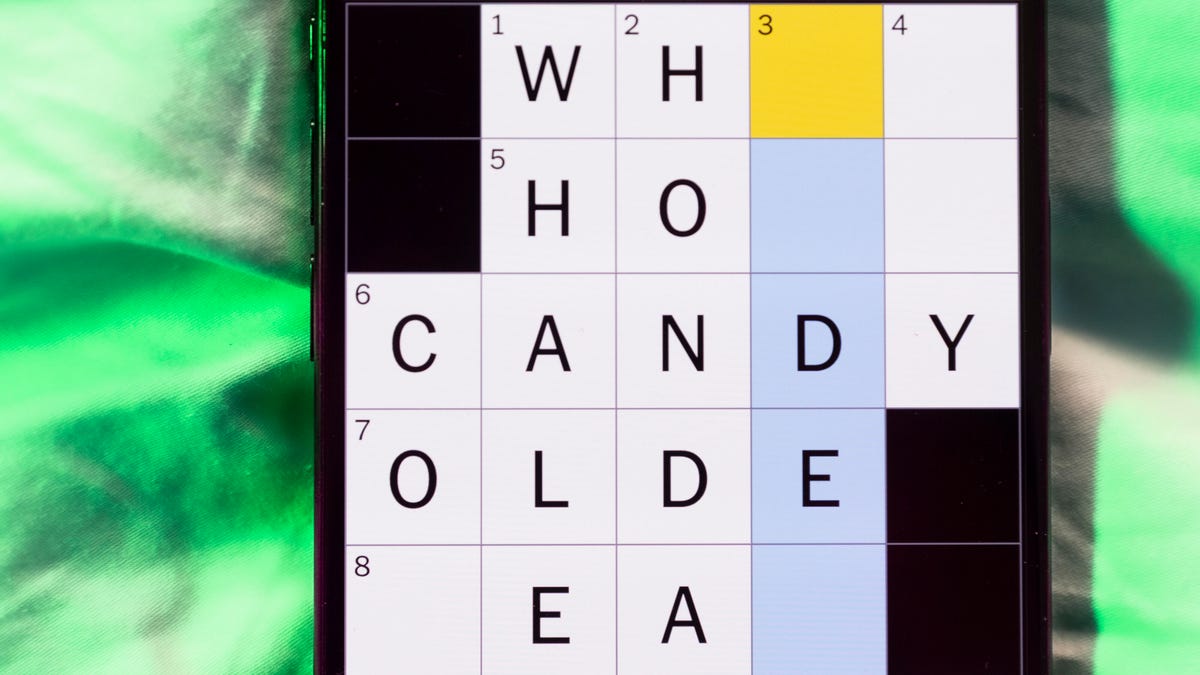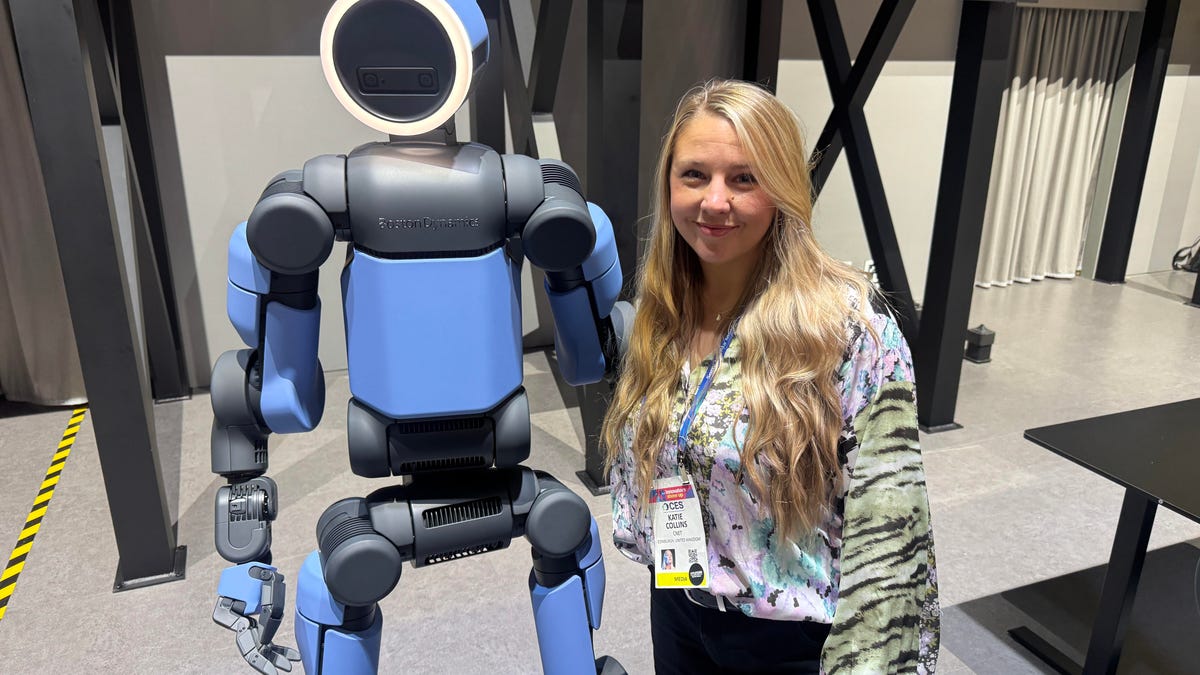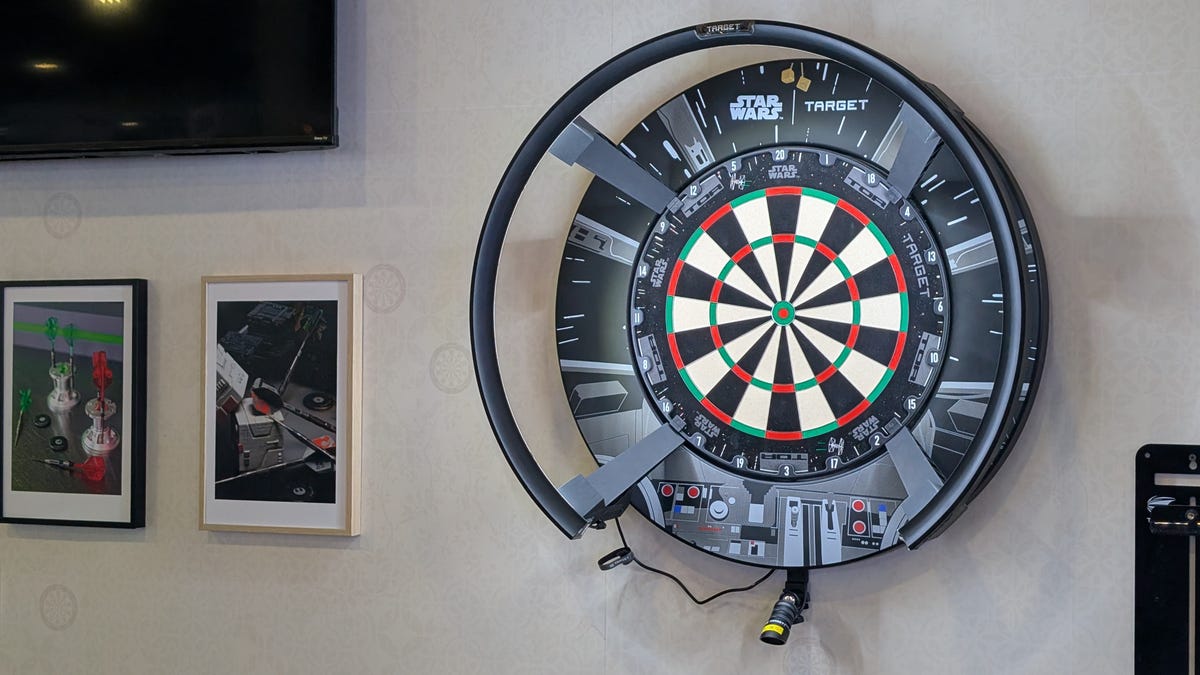Technologies
Google Pixel 8 Pro vs. iPhone 15 Pro Max, Galaxy S23 Ultra: Top-End Phones Compared
The Pixel 8 Pro brings new media-editing software tricks, but how else does it compare to the top premium smartphones?
The Pixel 8 Pro is Google’s latest top-end phone, packing a new processor, a brighter display and better cameras than its predecessor. But it faces stiff competition from two other handsets that dominate the premium smartphone market: the iPhone 15 Pro Max and the Samsung Galaxy S23 Ultra. How do they really compare?
The Pixel 8 Pro runs on the new Tensor G3 chipset, the third generation in a line of silicon Google has designed to augment its on-device AI processing. Tensor chipsets don’t seem to be quite as much of a performance powerhouse in benchmarks like Geekbench as the A17 Pro chip in the iPhone 15 Pro Max or the Snapdragon 8 Gen 2 chip in the Galaxy S23 Ultra. We’ll have to wait until we can fully test the Pixel 8 Pro to see how it performs compared with the others.
But the Tensor chipset does enable many of the Pixel family’s neat media-editing tricks, like Magic Eraser for taking elements out of photos, Audio Magic Eraser for diminishing background noise, and Best Take for combining the best bits of a burst of photos. These are the flashiest software advantages the Pixel 8 Pro holds over the competition (among others), even though Magic Eraser is technically available for other phones through the Google Photos app.

The other big advantage the Pixel 8 Pro holds is a guarantee of seven years of Android operating system and security updates. That’s far more than Samsung phones like the Galaxy S23 Ultra’s four years of OS updates and five years of security updates. And Apple is unclear about how long phones will be supported — the just-released iOS 17 update, for instance, leaves behind the iPhone 8 and iPhone X, both released in 2017, so five years of OS updates is the low-end estimate for a new iPhone.
The Pixel 8 Pro’s rear camera hardware includes a 50-megapixel main shooter, a 48-megapixel ultrawide and a 48-megapixel telephoto capable of 5x optical zoom. On paper, those cameras will likely produce sharper photos than the 12-megapixel ultrawide and 12-megapixel telephoto cameras on the iPhone 15 Pro Max, though we’ll have to test to compare it to Apple’s unique «tetraprism» technology in its zoom camera (the iPhone’s 48-megapixel main camera may be roughly comparable to the Pixel 8 Pro’s main shooter).
As far as rear cameras go, the Pixel 8 Pro might face the biggest challenge from the Galaxy S23 Ultra, which has a 200-megapixel main camera. While it has only a 12-megapixel ultrawide camera, Samsung’s top-of-the-line phone has two telephoto cameras: a 10-megapixel 3x optical zoom and a 10-megapixel 10x optical zoom, which is capable of up to 100x digital zoom. But with the phone’s starting cost of $1,200, those souped-up camera specs make sense considering the Pixel 8 Pro’s $1,000 starting price and the iPhone 15 Pro Max’s $1,100 price tag.
All three phones have pretty similar selfie cameras: the Pixel 8 Pro has a 10.5-megapixel selfie shooter, while the iPhone 15 Pro Max and the Galaxy S23 Ultra both have 12-megapixel front-facing cameras.

Regarding design, the three phones have very different looks. The Pixel 8 Pro retains its predecessor’s wide horizontal camera block spanning the width of the phone. A metallic stripe wraps around the phone’s three rear cameras, with a flash and new temperature sensor on the right side (for checking food and, pending FDA approval, your own skin). The rest of the phone’s rear cover is a matte glass, and its sides are rounded.
The iPhone 15 Pro Max has its predecessor’s flat sides and square camera block, with lenses that are larger and stick out farther than those of previous iPhones. The Galaxy S23 Ultra is the physically largest of the bunch, though its design has tended toward minimalism, with just the five cameras popping out of the undecorated back cover (i.e. no big camera block), as well as rounded sides.
The Pixel 8 Pro’s 6.7-inch OLED display (3,120×1,440 pixels) is the same size as its predecessor’s, but it’s brighter, maxing out at 2,400 nits with a 1 to 120Hz refresh rate. It has a slightly sharper resolution than the iPhone 15 Pro Max’s 6.7-inch OLED (2,796x 1,290-pixel) screen, and it’s on par with the Galaxy S23 Ultra’s 6.8-inch AMOLED (3,088×1,440-pixel) display (both Apple’s and Samsung’s phones have 120Hz adaptive refresh rates).
The phones are also pretty similar in terms of other hardware specs. The Pixel 8 Pro comes with 12GB of RAM and 128GB to 1TB of storage. Apple never specifies the amount of memory in its phones, though GSMArena says the iPhone 15 Pro Max has 8GB, and the phone comes with 256GB, 512GB or 1TB of storage. The Galaxy S23 Ultra starts with 8GB of RAM and 256GB of storage, but it can also be configured for 12GB of RAM and 256GB, 512GB or 1TB of storage. None of the three has a slot for expandable storage, so you’ll have to store your extra files in the cloud or hook up an external SSD.
Similarly, Apple doesn’t disclose battery capacity on its phones, saying only that it gets up to 29 hours of video playback (in other words, it should last all day without needing to recharge). The Pixel 8 Pro has a 5,050mAh battery, while the Galaxy S23’s battery has a capacity of 5,000mAh.
In a first for Apple, the iPhone 15 Pro Max has a USB-C port instead of its Lightning connector and has 25 watts of wired charging as well as 15 watts of wireless charging. The Pixel 8 Pro has up to 30 watts of wired charging and 23 watts of wireless, while the Galaxy S23 Ultra has the fastest speed, with 45 watts of wired charging and 15 watts of wireless.
To see how else the Pixel 8 Pro stacks up against the iPhone 15 Pro Max and the Galaxy S23 Ultra, we’ve placed each phone into this side-by-side comparison chart:
Google Pixel 8 Pro vs. iPhone 15 Pro Max vs. Samsung Galaxy S23 Ultra
| Google Pixel 8 Pro | Apple iPhone 15 Pro Max | Samsung Galaxy S23 Ultra | |
| Display size, tech, resolution, refresh rate, brightness | 6.7-inch OLED; 3,120×1,440 pixels; 1-120Hz adaptive refresh rate | 6.7-inch OLED; 2,796×1,290 pixels; 120Hz adaptive refresh rate | 6.8-inch AMOLED; 3,088×1,440 pixels; 120Hz adaptive refresh rate |
| Pixel density | 489 ppi | 460 ppi | 500 ppi |
| Dimensions (inches) | 6.4x3x0.3 inches | 6.29×3.02×0.32 inches | 6.43×3.07×0.35 inches |
| Dimensions (millimeters) | 162.6×76.5×8.8 millimeters | 159.9×76.7×8.25 millimeters | 163.3x78x8.9 millimeters |
| Weight (grams, ounces) | 213 g (7.5 oz) | 221 g (7.81 oz) | 234 g (8.25 oz) |
| Mobile software | Android 14 | iOS 17 | Android 13 |
| Camera | 50-megapixel (wide), 48-megapixel (ultrawide), 48-megapixel (telephoto) | 48-megapixel (wide), 12-megapixel (ultrawide), 12-megapixel (5x telephoto) | 200-megapixel (wide), 12-megapixel (ultrawide), 10-megapixel (3x telephoto), 10-megapixel (10x telephoto) |
| Front-facing camera | 10.5 megapixels | 12 megapixels | 12 megapixels |
| Video capture | 4K | 4K | 8K |
| Processor | Google Tensor G3 | A17 Pro | Qualcomm Snapdragon 8 Gen 2 for Galaxy |
| RAM/storage | 12GB RAM + 128GB, 256GB, 512GB, 1TB | 256GB, 512GB, 1TB (RAM undisclosed) | 8GB + 256GB; 12GB + 256GB; 12GB + 512GB; 12GB + 1TB |
| Expandable storage | None | None | |
| Battery | 5,050 mAh | Undisclosed; Apple says up to 29 hours of video playback (25 hours streamed) | 5,000 mAh |
| Fingerprint sensor | Under display | None (Face ID) | Under display |
| Connector | USB-C | USB-C | USB-C |
| Headphone jack | None | None | None |
| Special features | 5G (Sub 6 and mmWave); VPN by Google One; 7 years of OS, security and Feature Drop updates; front-facing camera has autofocus; 13W Qi wireless charging; 30W wired charging; USB-3.2 speeds via USB-C; IP68 dust and water resistance; Gorilla Glass Victus 2 on front and back | 5G (Sub6, mmWave), Action Button, Always-On display, IP68 water resistant, MagSafe, Dynamic Island, 5x optical zoom (120mm equivalent), satellite connectivity, eSIM, thread networking technology | 5G (Sub6, mmWave), IP68 water resistant, wireless PowerShare to charge other devices, integrated S Pen, 100x Space Zoom, 10x optical zoom, UWB for finding other devices, 45W wired charging |
| US price off-contract | $999 (128GB) | $1,199 (256GB) | $1,200 (256GB) |
| UK price | Converts to £825 (128GB) | £1,199 (256GB) | £1,249 (256GB) |
| Australia price | Converts to AU$1,575 (128GB) | AU$2,199 (256GB) | AU$1,949 (256GB) |
Technologies
Today’s NYT Mini Crossword Answers for Friday, Jan. 9
Here are the answers for The New York Times Mini Crossword for Jan. 9.

Looking for the most recent Mini Crossword answer? Click here for today’s Mini Crossword hints, as well as our daily answers and hints for The New York Times Wordle, Strands, Connections and Connections: Sports Edition puzzles.
Need some help with today’s Mini Crossword? The Across clues were kind of tough today. Read on for all the answers. And if you could use some hints and guidance for daily solving, check out our Mini Crossword tips.
If you’re looking for today’s Wordle, Connections, Connections: Sports Edition and Strands answers, you can visit CNET’s NYT puzzle hints page.
Read more: Tips and Tricks for Solving The New York Times Mini Crossword
Let’s get to those Mini Crossword clues and answers.
Mini across clues and answers
1A clue: Question in a late-night text
Answer: YOUUP
6A clue: Plentiful
Answer: AMPLE
7A clue: Saint ___ and Nevis (Caribbean nation)
Answer: KITTS
8A clue: Baby-bringing bird
Answer: STORK
9A clue: Take care of the tab
Answer: PAY
Mini down clues and answers
1D clue: Himalayan herbivores
Answer: YAKS
2D clue: Fail to include
Answer: OMIT
3D clue: «High five!»
Answer: UPTOP
4D clue: The «U» of UV rays
Answer: ULTRA
5D clue: Annoying to deal with
Answer: PESKY
Don’t miss any of our unbiased tech content and lab-based reviews. Add CNET as a preferred Google source.
Technologies
I Got Up Close and Personal With Boston Dynamics’ New Atlas Robot
Before Atlas takes its first steps into the world of work later this year, I found myself face-to-face with CES 2026’s most talked-about robot on the show floor.

When I say that I went hands-on with the new Boston Dynamics Atlas robot, I mean that I actually held hands with it. This humanoid robot, which CNET just awarded the Best Robot of CES Award, is one of the most advanced in the world, and I couldn’t pass up the opportunity to get up close and personal with it.
This product version of the robot, which is set to be shipped to Hyundai factories imminently to start working, has been the talk of CES this year. The specific Atlas robot I encountered was a static model that wasn’t turned on or fully operational. Our interactions were, therefore, sadly one-sided. Still, I ran my hands over its soft-touch plastic shell and gently prodded at its finger joints, wondering how it would feel if they gripped me back.
People tend to have varying feelings about humanoid robots — understandable given that they are built to some degree in our image, while also usually being stronger than us, with «brains» that we don’t fully understand. Atlas definitely evokes contradictory emotions for me — even more so when I stood face-to-face with it.
I’m in awe of the engineering, a little fearful of its capabilities, hesitant about what it could mean for the future of humanity and charmed by its design and styling. The periwinkle blue iteration of Atlas that I met on the show floor at CES 2026 almost bears more resemblance to a Dyson product than it does the industrial robots that defined Boston Dynamics’ early days, when it was best known for its work with DARPA.
«There’s a lot of really specific things about this robot that probably look a little weird,» said Zachary Jackowski, Boston Dynamics VP and general manager of Atlas. He pointed to the legs, which he described as «like nothing anyone else was doing.»
Atlas’ thighs are narrow set and in line with the torso, while the calves are wider set, attached to their upper counterparts with a circular joint. This robot is, in fact, all subtle curves and soft lines. There are no harsh edges or stark angles.
During a year when CES has been flooded with humanoid robots, Atlas definitely does stand out due to its design. It appears both less classically human and less industrial than some of its peers, while also lacking the often intimidating, featureless faces they tend to exhibit. Instead, it has two low-set cameras resembling eyes placed where you’d usually expect a mouth to be. Its face is a perfect flat circle, defined by an LED halo that gives it a somewhat Pixar lamp effect.
I asked Jackowski why Boston Dynamics decided to skew so relatively unhuman with this version of its humanoid. «Well, it’s not a human,» he said. «It projects the wrong first impression about a robot to have it pretend to be something that it’s not.»
Particularly in the early days of humanoids, he added, robots won’t have anything like human-like intelligence. People should look at it and see it for what it is — a tool for performing tasks safely and efficiently.
In fact, most of the design decisions were made to keep Atlas as simple, scalable and safe as possible, Jackowski said. I remark that there’s some irony in thinking of a humanoid robot as simple, given the complexity of the technology and development process to bring Atlas to life.
The key to making it simple, Jackowski said, is having a strong enough grasp of the technology to «accomplish the complex thing of building a humanoid robot,» but then being able to take it apart and understand that you can use fewer computers and actuators in it while achieving the same results.
And it’s essential to Boston Dynamics that Atlas is perceived as simple. After all, it’s a general-purpose humanoid, which might eventually be sent far and wide to fulfil all manner of roles. Jackowski calls it the «ultimate generalist.»
Simplicity aside, there are aspects of Atlas that Jackowski believes set it apart from other humanoids at the show. «The repairability of this robot is crazy good,» he said. «The runtime is crazy good. The strength is unlike anything.»
From working in Hyundai’s manufacturing plants, Atlas’s job trajectory is to eventually graduate to many of the same industrial environments where Boston Dynamics’ Spot robot works, before moving to bussing tables in the service industry and eventually into the home. The robot will evolve between now and then, Jackowski said. However, this could be an early glimpse of the type of humanoid that will eventually be our housemate.
That’s some way away, though, which is probably for the best. As I gaze up at Atlas, which I’d guess is around the same height as my husband, my feeling is that, however impressive Atlas is, I’m still not ready for it to move in.
Technologies
This Star Wars Dartboard Has a Secret That Will Stop You From Using the Force to Win
This cool dartboard has cameras to track your score and keep you honest

Right in the middle of the high-tech show floor at CES 2026 sits a pub called the Bull and Barrel with some of the coolest dartboards I’ve seen. Target Darts was showcasing its collaboration with both Star Wars and Xbox. Darts may not be for everyone, but I love «shooting some arrows» in my basement with the family. I also love anything Star Wars themed, so these tick a lot of boxes.
The basic Star Wars set comes with a branded board and wall protector that resembles the cockpit of the Millennium Falcon and costs $200. The board is of very high quality, with a tight-knit sisal fiber face, and the protector is thick enough to keep stray shots out of your drywall. The graphics are cool too, with nods to the original Falcon and even have the gold dice hanging above.
The big tech twist to this board, though, is the Omni light ring around the outside. It uses four cameras to track your dart’s position, then sends that info to an app that keeps score. The scoreboard is crisp and clear and uses the voice of legendary darts announcer John McDonald to narrate your game. It’s pretty great to hear his voice announce my terrible scores.
The Omni also allows you to connect with other players worldwide via shared scoreboards. I love the idea of my dad having a board at his house or playing a match with me at my house. It adds a feeling of community to home darts that you don’t normally get outside a pub or bar.
The Omni is a much more expensive proposition than the Star Wars set, coming in at $650, but if you’re serious about the game and a Star Wars fan, it looks to be a great investment.
-

 Technologies3 года ago
Technologies3 года agoTech Companies Need to Be Held Accountable for Security, Experts Say
-

 Technologies3 года ago
Technologies3 года agoBest Handheld Game Console in 2023
-

 Technologies3 года ago
Technologies3 года agoTighten Up Your VR Game With the Best Head Straps for Quest 2
-

 Technologies4 года ago
Technologies4 года agoBlack Friday 2021: The best deals on TVs, headphones, kitchenware, and more
-

 Technologies4 года ago
Technologies4 года agoGoogle to require vaccinations as Silicon Valley rethinks return-to-office policies
-

 Technologies4 года ago
Technologies4 года agoVerum, Wickr and Threema: next generation secured messengers
-

 Technologies4 года ago
Technologies4 года agoOlivia Harlan Dekker for Verum Messenger
-

 Technologies4 года ago
Technologies4 года agoiPhone 13 event: How to watch Apple’s big announcement tomorrow
